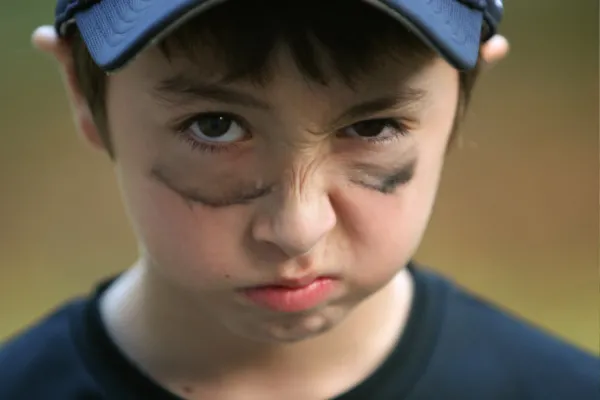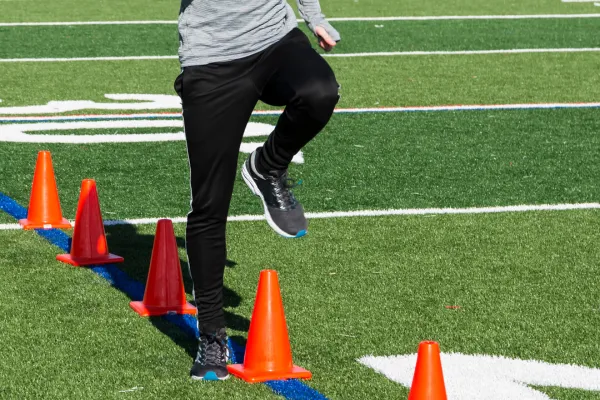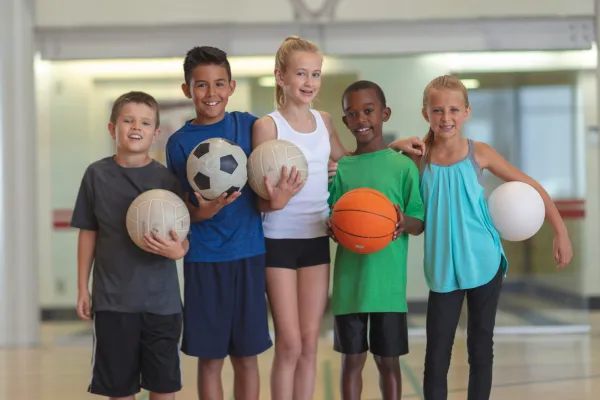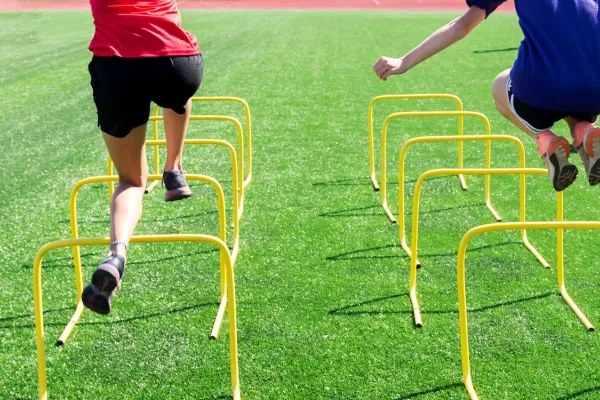
Signals, Not Struggles: Rethinking Athlete Behavior
Signals, Not Struggles: Rethinking Athlete Behavior
Written by Julie Hatfield-Still, Brand Executive for the International Youth Coaching Association and President of Beyond The Game Alliance
As coaches and parents, we’ve all been there: the fidgety athlete who just won’t sit still and listen to instruction, the kiddo who argues every call or suggestion, or the child who shuts down when things get hard. It’s easy to label those moments as “bad behavior.” But what if, instead of misbehavior, we started to see these moments as signals? What if, instead of getting frustrated with ourselves, we take these opportunities to pause and ask ourselves what could be happening at a deeper level?
The truth is, children’s actions almost always communicate something deeper. Behavior is often the surface-level expression of an unmet need. When those needs aren’t understood or addressed, kids express them in the only way they know how, through their actions. Emotion is simply energy in motion.
A Coach’s Perspective
In my years of working with athletes, I’ve found that my “toughest” kids often become my favorite. Why? Because they challenge me –not only to grow as a coach, but also to reflect on my own patience, creativity, and ability to guide transformation.
Although it’s easy to let a young athlete’s attitude or distracting behaviors frustrate you, it’s also pretty incredible when you and that athlete create a breakthrough together. Those are the moments that stick.
I’ll be the first to admit: there are people in academia and clinical settings who may be more formally trained in child development or behavior. But after thousands of hours on the field and in gyms, I want to share the practical insights I’ve gained in hopes that they help you both as the coach you are today and the coach you’re becoming in this season.
The greatest lesson I’ve learned is simple: most kids don’t want to be “bad.” They want to be seen, heard, and understood. When we shift our mindset in this way, discipline becomes less about punishment and more about guidance. We stop putting out fires and start preventing them.
Common Needs That Show Up as Behavior
Here are some of the most significant needs that can get overlooked and how they often show up in sport:
Physical Needs: When kids are tired, hungry, or have been sitting too long, you’ll often see crankiness, restlessness, or “over-the-top” silliness.
Safety and Security: If life feels unpredictable or emotionally unsafe, kids may lash out, shut down, or cling to control in ways that look defiant.
Connection and Belonging: Every child craves attention and acceptance. If they don’t receive it in positive ways, they’ll often seek it in negative ones.
Autonomy and Competence: Children need to feel like they have a say and that they can succeed. When those needs are missing, behaviors like refusal, arguing, or perfectionism surface.
Recognition and Encouragement: Kids who feel unseen or constantly corrected without encouragement may withdraw, rebel, or stop trying altogether.
Emotional Expression: Without tools to manage big feelings, emotions come out sideways–through tantrums, outbursts, or avoidance.
What This Looks Like Across Ages
10U (Elementary Age)
At this stage, kids are still learning the basics of emotional regulation and group dynamics. They rely heavily on adults for structure and reassurance. Their world is still very “here and now.”
Prevailing Needs: Movement, predictable routines, positive attention, encouragement, and the ability to feel safe and secure.
How it Shows Up: Restlessness, silliness, difficulty sitting still, or emotional meltdowns when things don’t go their way.
Coaching Example: A 9-year-old constantly interrupts drills with jokes. Instead of labeling it “disruptive,” see it as a need for connection and engagement. Redirect with a role (“You’re my demo partner for this next drill”) and give them a moment of belonging before diving back in.
14U (Middle School Age)
This is the “identity-testing” stage. Adolescents are pushing for independence, comparing themselves constantly to peers, and craving both belonging and autonomy. Their brains are wired for risk-taking, and emotions can be bigger than their ability to manage them.
Prevailing Needs: Autonomy, peer acceptance, a sense of competence, reassurance that mistakes are safe, and opportunities for voice/choice.
How it Shows Up: Backtalk, testing limits, perfectionism, withdrawing if embarrassed, or being overly dramatic when things don’t go right.
Coaching Example: A 13-year-old refuses to run a conditioning drill and argues loudly. Instead of escalating, offer a limited choice: “You can run with your group now, or you can run right after practice with me. Which do you prefer?” Giving them some ownership meets their need for autonomy while still holding the boundary.
18U (High School Age)
Older teens are balancing a lot–school, friendships, identity, pressure of performance, and often the question of “what’s next?” They are more aware of expectations and can carry stress heavily. The need for belonging is still strong, but they also crave respect and recognition as emerging adults.
Prevailing Needs: Emotional safety, encouragement, recognition of effort, support in separating identity from performance, and leadership opportunities.
How it Shows Up: Shutting down, acting “too cool,” withdrawing after mistakes, or showing indifference when pressure feels overwhelming.
Coaching Example: A 17-year-old misses a big shot and immediately disengages for the rest of practice. Instead of criticizing effort, approach quietly with encouragement: “One play doesn’t define you–I trust you, and I want you to take that shot again.” Meeting the need for reassurance and emotional safety can reignite their engagement.
Behavior shows up differently at every age because kids’ needs evolve as they grow. What looks like defiance, distraction, or disengagement is often just a clue. When we, as coaches, can see behavior as communication rather than a problem, we’re in a stronger position to guide kids not only in sport but also in life.
The truth is–this takes practice.
Coaching means wearing many hats, and in the moment, it can feel overwhelming to process everything coming at you. That’s why the skill often begins with reflection. You may not catch the “clue” right there at practice or in the heat of competition. But afterward, when you pause and think back on that moment, you begin to connect the dots: What was that behavior really about? What might that athlete have needed from me in that moment?
From there, you can create a plan for how you’ll respond the next time it happens. Over time, this becomes second nature. The more you practice pausing, reflecting, and preparing, the quicker you’ll be able to see past the behavior and meet the need hiding underneath it.
Quick Reference: Behavior → Need
Restless, fidgety, can’t focus → Needs movement or a break.
Defiant, arguing → Needs autonomy, choice, or to feel heard.
Shutting down, withdrawing → Needs emotional safety or encouragement.
Clowning, attention-seeking → Needs connection and belonging.
Perfectionism, “I can’t” → Needs competence and a safe space to fail.
What This Means for Coaches and Parents
When we approach behavior as communication, we respond with curiosity instead of frustration. We begin to look beneath the surface and create stronger, more supportive environments where kids can thrive.
That doesn’t mean letting go of boundaries or expectations. It means setting them with empathy and understanding. When kids know their needs will be met and they feel safe, connected, and capable, their behavior naturally follows.
Next time a child “acts out,” pause and ask: What need is behind this? You may be surprised at how quickly the behavior shifts once the need is met.
Sometimes coaching is ‘experiential’, let this be an experiment you try this season.
It’s time to raise the standard.
Coach Julie Hatfield-Still

About the Author:
Julie is an Author, CEO and Coach. She is the Brand Executive at the IYCA and the President & Founder of the Non-Profit Beyond The Game Alliance, which offers a full suite of workshops and support for teams and individual athletes. In addition to her work as a business consultant and coach of coaches, leaders, and entrepreneurs.
Julie is a Speed Development Specialist and Inner-Game Coach at the college, high school and youth levels.
Visit Julie’s Author Page
______________________________________________________________
Ready to Lead with Confidence, Not Guesswork?
At the IYCA, we believe that coaching is a profession of growth—and high-performing coaches are built on consistent habits, not just good intentions. That’s why we provide practical, athlete-centered education to help coaches at every level develop the skills, systems, and confidence to lead with excellence.
Whether you’re working with youth athletes just learning the game or preparing high schoolers for the next level, the IYCA is here to help you build the habits that matter most, starting with education.
Explore our coaching resources and certification programs: iyca.org
Need help designing a Coach Development System for your school, club, or organization?
Schedule a free consultation—we’ll walk alongside you to create a model that empowers both coaches and athletes.
📧 Email: [email protected]
If this resource sparked reflection or affirmed your mission—don’t stop here.
Get certified with the International Youth Coaching Association (IYCA) and gain the tools, science, and strategies to confidently support long-term athlete development.
Whether you’re working with beginners or elite youth athletes, IYCA certifications & programs are designed to elevate your impact.
Learn more and get certified today:
Certifications
Certified Athletic Development Specialists (CADS)
Certified Speed & Agility Specialist (CSAS)
Youth Nutrition Specialist (YNS)
Youth Athletic Assessment Specialist (YAAS)
High School Strength & Conditioning Specialist (HSSCS)
Because the best coaches never stop learning, and the athletes you serve deserve your best.








